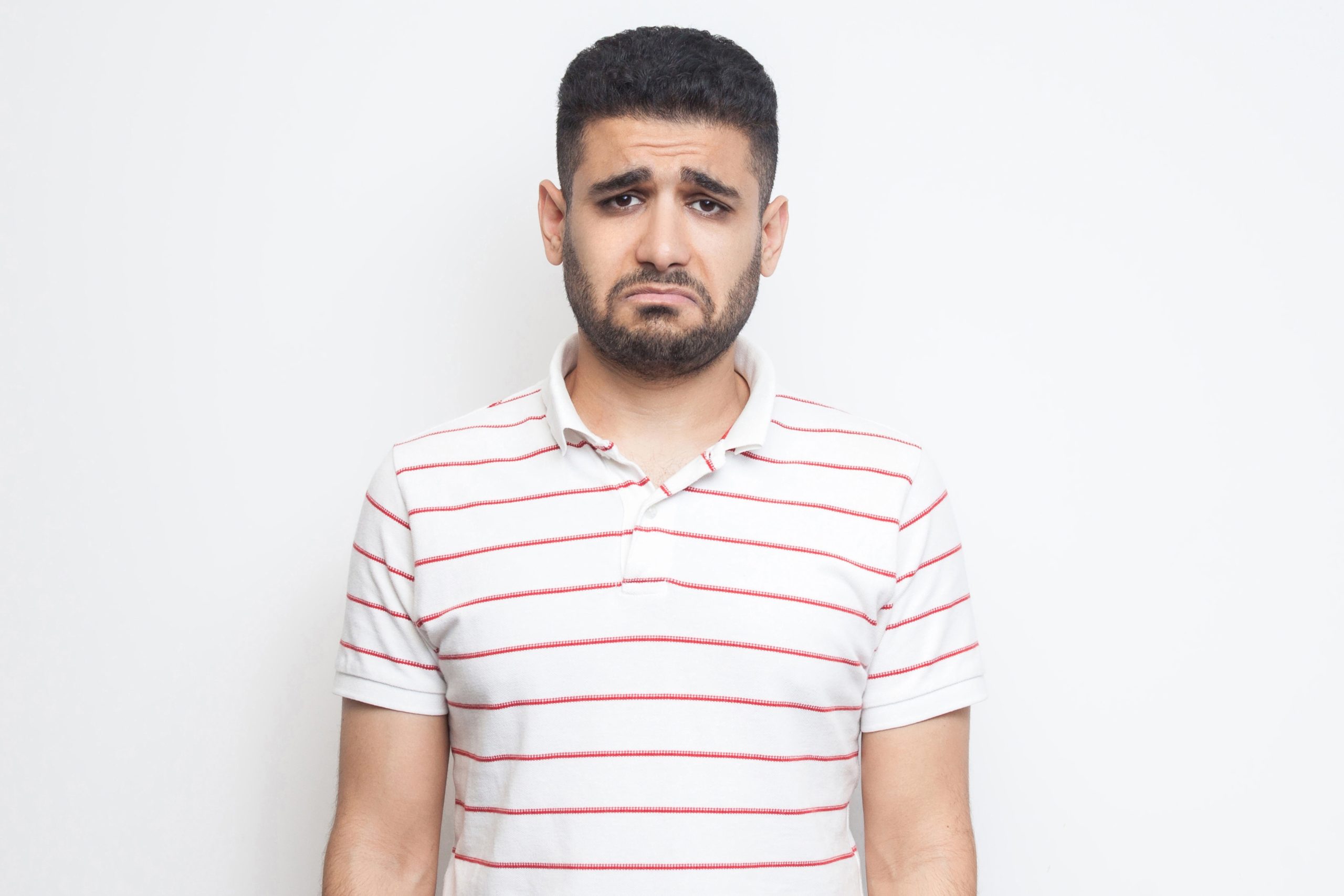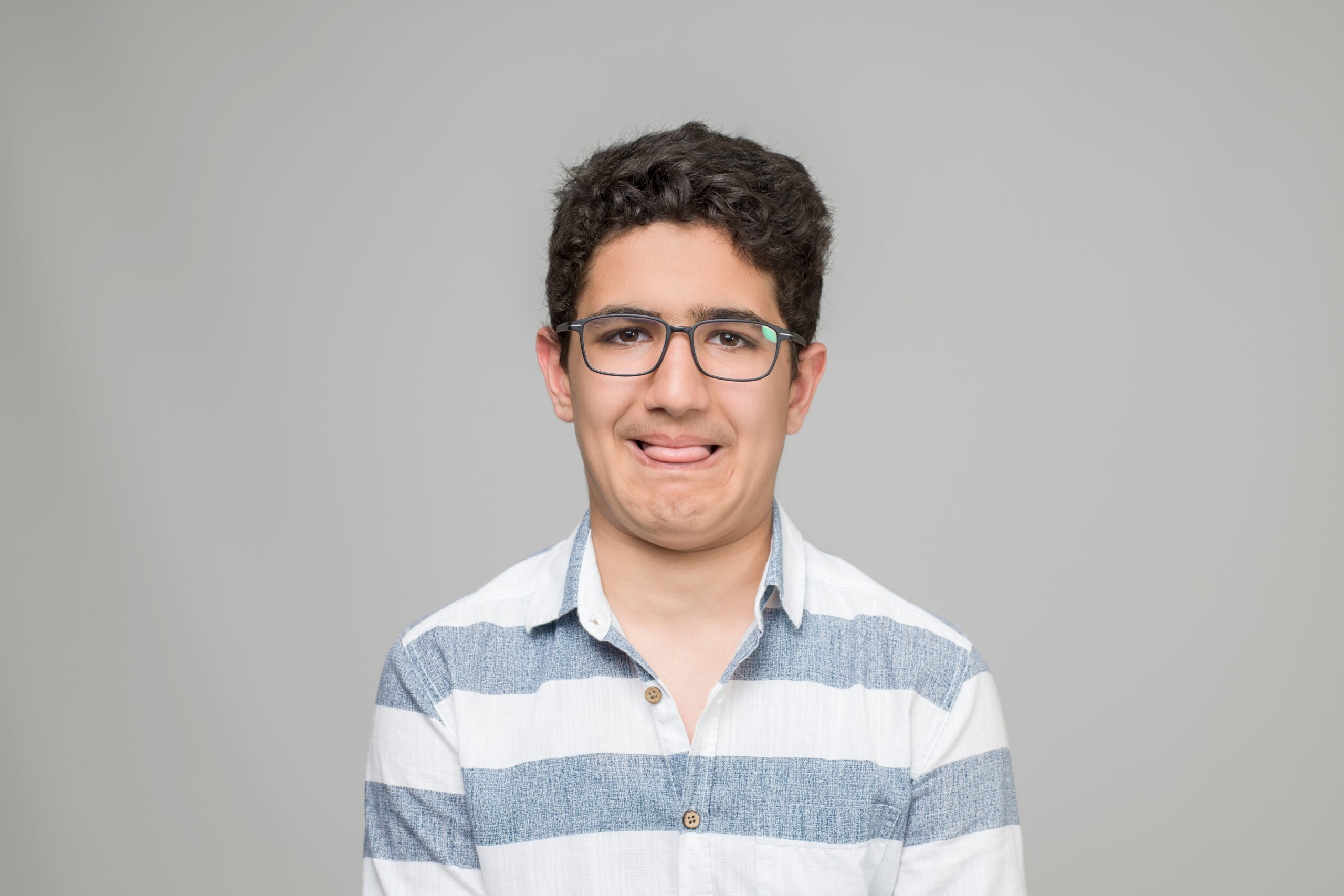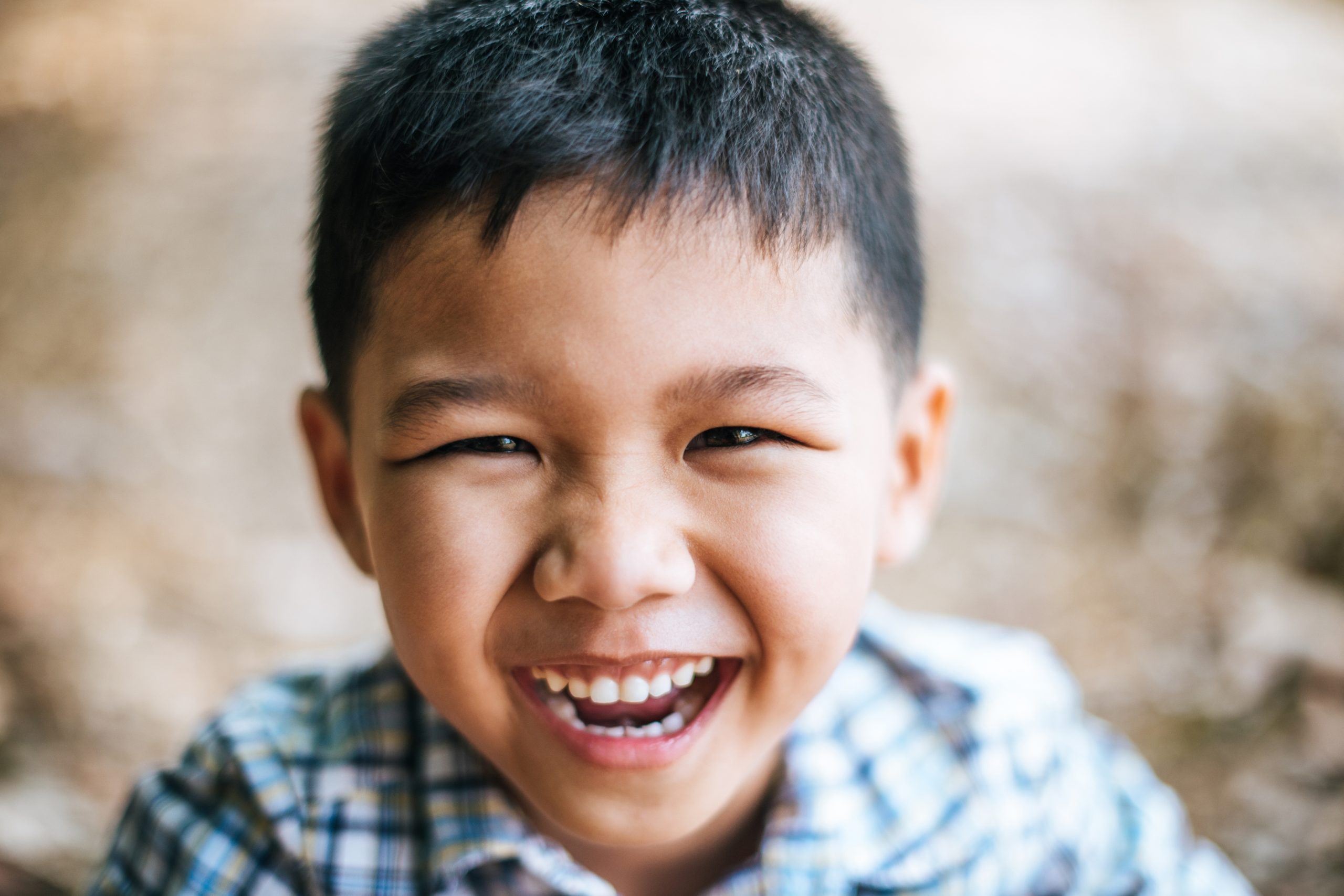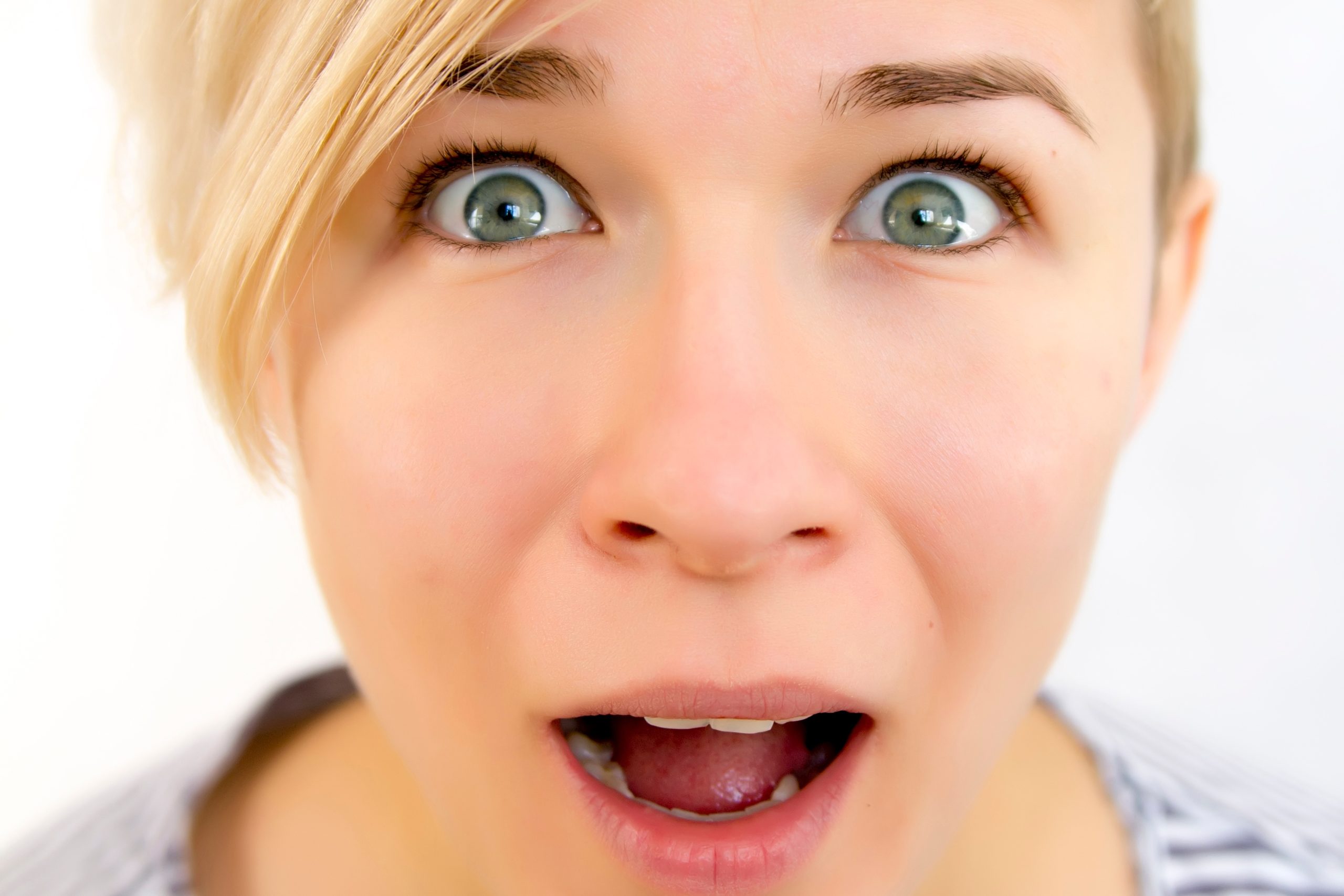FREE Emotional Intelligence (Reading People) Questions and Answers
This expression on this face...

Explanation:
Oblique eyebrows, caused by the corrugator muscles pulling the eyebrows in while the inner half of the frontalis muscle pulls them up, are a sign of sadness. People frequently gaze down because of a small pouch in the inner region of the forehead. The lips' corners are also pulled straight downward, giving the mouth a curved appearance.
The facial expression of grief frequently resembles guilt and is accompanied by the same oblique eyebrow movements as compassion.
This expression on this face...

Explanation:
When we feel threatened physically or psychologically, we express our fear.
Fear frequently gets mistaken for a surprise when it manifests on the face. However, unlike here, when we are surprised, our mouth is not pulled to the side as it is when we are afraid; rather, our jaw drops, and the mouth hangs open. In addition, when we are astonished, our eyebrows arch more than when we are terrified.
This expression on this face...

Explanation:
People move their heads to the side, exposing their necks when embarrassed and averting their gaze. And unlike other smiles, the embarrassed smile is distinct: the lips clench strongly, expressing feelings of restriction or restraint.
While shame can appear similar to embarrassment, shame is distinguished by a straight, downward head movement and a lack of smile.
This expression on this face...

Explanation:
The muscles above the upper lip pull up when we are disgusted, lifting the upper lip, wrinkling the nose, and narrowing the eyes.
People frequently mix up contempt and rage. But when angry, the mouth tightens, the eyebrows are visibly lowered, and the upper eyelid is raised. The mouth opens with distaste, and the tongue sticks out if you need to puke.
This expression on this face...

Explanation:
This is a traditional example of a sincere smile that denotes satisfaction, known as a Duchenne smile.
Two muscular actions indicate it. The zygomatic major muscle pulls the corners of the lips up, which is the movement that underlies all grins. But crucially, what happens around the eyes shows that this is a sincere smile: the muscles contract, causing those crow's feet wrinkles around the corners of the eyes and that pouching of the lower eyelid. The person isn't just smiling politely when you see these indications; he's happy.
This expression on this face...

Explanation:
When people feel angry, threatened, or frustrated, you can see these muscular movements in their lips, the area surrounding their eyes, and their brows. Researchers believe that when we are furious, we make this look to defend our face in the event of a physical altercation. For instance, furrowed brows can shield the eyes.
People frequently mistake disgust for rage, but a lifted upper lip and a visible wrinkle on the nose distinguish disgust.
This expression on this face...

Explanation:
Fear and surprise are frequently confused. In contrast, when we are surprised, our upper eyelids lift, and our brows arch. When fearful, our lower eyelids contract and our brows appear flat and rigid. Additionally, when we are surprised, our jaws drop, but when we are afraid, our lip corners slant inward, giving the mouth a tighter appearance.
Some researchers contend that when we encounter something unexpected—a long-lost friend, an unexpected award—we try to take in as much of this new information as possible.